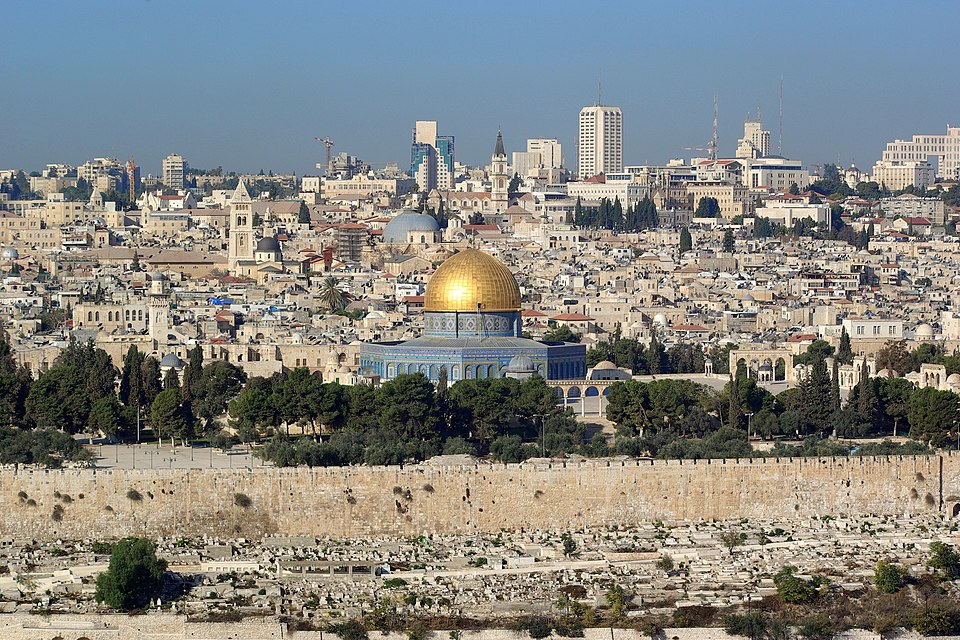

Curated experiences in ירושלים


The Montefiore Windmill is a landmark windmill in Jerusalem. Designed as a flour mill, it was built in 1857 on …

The Dung Gate (Hebrew: שער האשפות, romanized: Sha'ar Ha'ashpot), also known as Bab al-Maghariba (Arabic: باب المغاربة, romanized: Gate of …

The Garden Tomb (Arabic: بستان قبر المسيح, romanized: Bustān Qabr al-Masīḥ, lit. 'the Garden of the Tomb of Christ'; Hebrew: …

The Jerusalem Forest (Hebrew: יער ירושלים) is an artificial municipal pine forest located in the Judean Mountains on the outskirts …

Ammunition Hill (Hebrew: גִּבְעַת הַתַּחְמֹשֶׁת, Giv'at HaTahmoshet; Arabic: تلة الذخيرة) was a fortified Jordanian military post in the northern part …

The Church of Saint Anne (French: Église Sainte-Anne, Latin: Ecclesia S. Anna, Arabic: كنيسة القديسة حنة, Hebrew: כנסיית סנטה אנה) …

The Church of Mary Magdalene (Russian: Церковь Святой Марии Магдалины; Arabic: كنيسة القديسة مريم المجدلية; Hebrew: כנסיית מריה מגדלנה) is …

The Jerusalem Great Synagogue (Hebrew: בֵּית הַכְּנֶסֶת הַגָּדוֹל בּיְרוּשָׁלַיִם) is an Orthodox Jewish congregation and synagogue, located at 56 King …

The Menachem Begin Heritage Center is the official state memorial commemorating Menachem Begin, Israel's sixth Prime Minister. The center is …

Bloomfield Science Museum is a science museum in Jerusalem, established in 1992. The museum is located opposite the Hebrew University …

Sacher Park (Hebrew: גן סאקר) is the largest public park in the center of Jerusalem, near the neighborhoods of Kiryat …

Ein Karem (Hebrew: עין כרם, romanized: ʿEin Kārem; Arabic: عين كارم, romanized: ʿAyn Kārim) also Ein Kerem or Ain Karem, …

The Tisch Family Biblical Zoo in Jerusalem (Hebrew: גן החיות התנ"כי בירושלים על שם משפחת טיש, Arabic: حديقة الحيوان الكتابية …

The Rockefeller Archeological Museum, formerly the Palestine Archaeological Museum ("PAM"; 1938–1967), is an archaeology museum located in Jerusalem, next to …

The Hurva Synagogue (Hebrew: בית הכנסת החורבה, romanized: Beit ha-Knesset ha-Hurva, lit. 'The Ruin Synagogue'), also known as Hurvat Rabbi …

Jaffa Gate (Hebrew: שער יפו, romanized: Sha'ar Yafo; Arabic: باب الخليل, romanized: Bāb al-Khalīl, "Hebron Gate") is one of the …

The Damascus Gate is one of the main Gates of the Old City of Jerusalem. It is located in the …


Mahane Yehuda Market (Hebrew: שוק מחנה יהודה, romanized: Shuk Mahane Yehuda), often referred to as "The Shuk" (Hebrew: השוק, romanized: …
Create a personalized itinerary and unlock the finest experiences ירושלים has to offer
Plan Your Trip